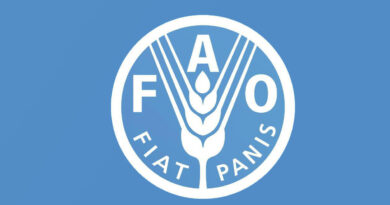Expect more record temperatures, say Hutton experts
05 July 2023, UK: June’s record breaking UK temperatures should not be a surprise – more a sign of things to come, according to experts at The James Hutton Institute in Aberdeen.
Scientists at the institute say that we should expect temperature records to be broken more frequently, with impacts on crops, wildlife and especially rivers, when combind with increasing water scarcity.
The warnings follow the Met Office announcing that June was the UK’s hottest June on its records since 1884, with an average mean of 15.8ºC. This was 0.9ºC warmer than the previous record, held jointly by 1940 and 1976.
The announcement followed the Scottish Environmental Protection Agency (SEPA) putting most of Scotland on alert level for water scarcity, with more areas now under “significant water scarcity”, the highest alert level.
It has since been revealed that the world’s average temperature reached a new high on Monday 3 July, topping 17 degrees Celsius for the first time. US researchers said the new record was the highest in any instrumental record dating back to the end of the 19th century, according to the BBC.
The Hutton itself recorded a daily mean air temperature of 15.1ºC at its Invergowrie campus – making it the hottest June on its records, although only 0.1ºC warmer than the previous record in 1992. This compares with 14.3ºC for Scotland as a whole, according to the Met Office.
The institute also saw 63% of the normal level of rain for June at Invergowrie, at 39.5 mm, making it a relatively dry month*, in comparison with 74% of the norm for Scotland as a whole.
Dr Mike Rivington, a senior scientist at the Hutton’s Aberdeen campus, says, “The temperatures we have seen have been projected by climate scientists for many years now and we can expect to experience these high temperatures more frequently. What has been an infrequent occurrence will become the norm.”
As well as creating uncomfortable conditions for humans, the higher temperatures could impact crop yields and even insect development, which can be reliant on temperature as a trigger for phases of development as they go through their life cycle, says Dr Rivington, who has researched land use and climate change for more than two decades.
“With people going outside more in the warmer weather, there’s also a greater risk of wildfire,” he adds.
The higher temperatures could also impact river life, says Dr Rachel Helliwell, Director of the Centre of Expertise for Waters (CREW) and the Hydro Nation International Centre at the Hutton.
“River water temperature is of critical importance to aquatic life and particularly to the growth and survival of freshwater fish such as salmon and trout,” she says. “Sustained high river temperatures are of particular concern as, for example, Brown trout stop feeding at temperatures above 20°C and sustained water temperatures above 30°C are lethal.”
A study by the Hutton looking at the River Spey found that river temperatures had already increased over the last century by 2-3°C, with a high of 27.5°C seen in June 2018 (when the study ended).
Dr Susan Cooksley, a catchment scientist and practitioner at the Hutton, says the combined effects of lower water levels, that we’re also seeing in rivers, and rising temperatures, can be catastrophic.
In these conditions fish and invertebrates seek refuge wherever they can find cooler water. As there is less water, pollutants are concentrated, there is greater potential for the spread of disease and overall animals are put under immense stress. In really low flow conditions, salmon and sea trout can struggle to get to their spawning grounds.
“For some species, like already critically endangered freshwater pearl mussels, there’s no escape,” she says. “They can’t react or evolve fast enough to survive. Further compounding the challenges is the lack of snow cover in the mountains, which used to provide a flow of cool water into the rivers right through to June, and supported that Spring fish migration upstream.”
SEPA’s latest water scarcity report put the Nairn, Findhorn, Spey and Dee catchments on moderate water scarcity alert as the flows in these areas were “extremely low”. According to the report, if rivers remain at very low flows for more than 30 consecutive days there is a heightened risk of severe, long lasting ecological impact.
“The immense effort that is being put into restoration in river catchments needs to expand at scale, with new riverbank woodland creation providing vital shade and wetland restoration giving a store of water in times of drought,” adds Dr Cooksley. “It’s essential that we push ahead urgently with our river restoration efforts in order to build resilience in the face of the changing climate.”
For Invergowrie, the hottest day of the month was June 24, with a high of 25.3ºC. There was a low of 6.6ºC on June 8.
The 10 hottest June daily air means at the Hutton’s Invergowrie campus have been:
2023 15.1
1992 15.0
2003 14.6
2014 14.6
1976 14.6
2006 14.5
2005 14.3
1960 14.3
2010 14.3
2022 14.2
June saw a total of 174.6 sunshine hours, which was 107.4% of the usual long-term average of 162.6 hours.
*One day’s data was missing
Also Read: Bayer grant to explore the potential of native grains
(For Latest Agriculture News & Updates, follow Krishak Jagat on Google News)















